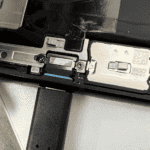Is your wireless mouse acting up? A quick reset might be just what you need. To reset a wireless mouse, turn it off, remove the batteries, wait a few seconds, reinsert the batteries, and turn it back on. This simple process often solves many common issues.
Wireless mice can sometimes become unresponsive or develop connection problems. Resetting can fix these issues without the need for technical know-how. It’s a quick fix that can save you time and frustration.
Some wireless mice have a dedicated reset button. If yours does, press and hold it for a few seconds until the indicator light blinks. This performs a soft reset, which can resolve minor glitches without erasing your custom settings.
| Reset Type | Steps | Benefits |
|---|---|---|
| Basic Reset | Turn off, remove batteries, wait, reinsert, turn on | Fixes most issues |
| Soft Reset | Press reset button (if available) | Preserves settings |
| Hard Reset | Unplug receiver, press buttons, reconnect | Resolves deeper problems |
Understanding Wireless Mouse Operation
Wireless mice use radio frequency or Bluetooth technology to communicate with computers. They offer flexibility and convenience but can experience connectivity issues.
Connection Types and Protocols
Wireless mice connect to computers via RF or Bluetooth. RF mice use a USB wireless receiver that plugs into the computer. Bluetooth mice pair directly with the computer’s built-in Bluetooth.
RF mice typically operate on 2.4 GHz frequency. They offer plug-and-play simplicity. Bluetooth mice use the Bluetooth protocol. They don’t require a USB port but may need more setup.
Some brands use proprietary protocols. Logitech’s Unifying technology allows multiple devices to connect to one receiver.
Connection range varies:
- RF mice: Up to 30 feet
- Bluetooth mice: Up to 33 feet
Battery life differs too. RF mice often last longer between charges.
Common Wireless Mouse Issues
Wireless mouse issues can frustrate users. Knowing common problems helps troubleshoot faster.
Connection problems top the list. Causes include:
- Low batteries
- Interference from other devices
- Faulty receivers
- Outdated drivers
Lag or cursor jumping can occur. This often results from interference or low signal strength.
Some mice struggle on certain surfaces. Using a mouse pad can help.
Unexpected disconnects happen too. This may indicate dying batteries or a failing mouse.
Driver conflicts sometimes cause erratic behavior. Updating or reinstalling drivers can fix this.
Table: Quick Fixes for Common Issues
| Issue | Possible Fix |
|---|---|
| No connection | Replace batteries |
| Lag | Move closer to receiver |
| Erratic movement | Clean mouse sensor |
| Frequent disconnects | Update mouse drivers |
Reset Procedures for Wireless Mice
Resetting a wireless mouse can solve many common issues. Different methods exist depending on the mouse model and problem severity.
Soft Reset Process
To perform a soft reset:
- Turn off the mouse
- Remove the batteries
- Wait 30 seconds
- Reinsert the batteries
- Turn the mouse back on
This process often fixes minor connectivity problems. If issues persist try reconnecting the USB receiver. Unplug it from your computer then plug it back in. Make sure the receiver is in a USB port close to the mouse for optimal signal strength.
Hard Reset Using the Dedicated Reset Button
Many wireless mice have a dedicated reset button. To use it:
- Locate the reset button (usually on the bottom of the mouse)
- Press and hold for 5-10 seconds
- Release the button
- Wait for the mouse to reconnect
This method resets the mouse to factory settings. It can resolve more stubborn connection issues. After resetting you may need to re-pair the mouse with its receiver.
Resetting Through Mouse Settings
You can also reset your mouse through software:
- Open Device Manager
- Find “Mice and other pointing devices”
- Right-click your wireless mouse
- Select “Uninstall device”
- Restart your computer
| Reset Method | Difficulty | Best For |
|---|---|---|
| Soft Reset | Easy | Minor issues |
| Hard Reset | Medium | Connectivity problems |
| Software Reset | Advanced | Driver-related issues |
After restarting Windows will reinstall the mouse drivers. This can fix problems caused by corrupt or outdated software. If issues continue consider updating or reinstalling your mouse software manually.
Troubleshooting Hardware and Connection Problems
Wireless mouse issues often stem from hardware or connection problems. Addressing these quickly can get your mouse working again.
Addressing Unresponsive Buttons
Unresponsive buttons can be frustrating. First, clean the mouse with a soft cloth to remove dirt. Check for physical damage to buttons or scroll wheel.
Try the mouse on another surface. Some mice don’t work well on glass or reflective surfaces.
Reset the mouse by unplugging it for 30 seconds, then reconnecting. For wireless models, remove and reinsert batteries.
If problems persist, connect the mouse to a different USB port. Front ports may lack power on some computers.
Checking and Updating Device Drivers
Outdated or corrupt drivers can cause wireless mouse issues. Open Device Manager on your computer. Find the mouse under “Mice and other pointing devices.”
Right-click and select “Update driver.” Choose to search automatically for updated driver software.
If no updates are found, try uninstalling the driver. Right-click the mouse and select “Uninstall device.” Restart your computer. Windows will reinstall the driver automatically.
For brand-specific issues, visit the manufacturer’s website. Logitech Support offers drivers and troubleshooting tools for their mice.
| Common Issue | Quick Fix |
|---|---|
| Unresponsive buttons | Clean mouse, check surface |
| Connection problems | Reset USB receiver, change ports |
| Driver issues | Update or reinstall drivers |
Enhancing Mouse Performance and Customization
Adjusting mouse settings can significantly improve your user experience. Customizing options lets you tailor your mouse’s behavior to your preferences.
Adjusting Mouse Options
To adjust mouse options on Windows, go to Settings > Devices > Mouse. Here you can change pointer speed and scroll wheel behavior. For more detailed settings, click “Additional mouse options” to open the Mouse Properties window.
In the Mouse Properties window, you’ll find tabs for buttons, pointers, pointer options, and wheel settings. The Pointer Options tab lets you adjust cursor speed and precision. Enable “Enhance pointer precision” for better control.
For Logitech mice, download Logitech Options software. This program offers extra customization features like:
- Button remapping
- Gesture controls
- App-specific settings
| Setting | Description |
|---|---|
| Pointer Speed | Adjusts cursor movement speed |
| Scrolling Speed | Controls how fast pages scroll |
| Double-Click Speed | Sets sensitivity for double-clicks |
Customizing Clicklock and Primary Button Settings
Clicklock lets you drag items without holding down the mouse button. To enable it, go to Mouse Properties > Buttons tab and check “Turn on ClickLock”. Adjust the hold time to your preference.
To switch your primary button, go to Mouse Properties > Buttons and select “Switch primary and secondary buttons”. This is helpful for left-handed users.
Logitech Options software allows further customization. You can:
- Assign custom functions to buttons
- Create app-specific profiles
- Set up one-click login shortcuts
Experiment with these settings to find what works best for you. Small tweaks can lead to big improvements in comfort and productivity.
Frequently Asked Questions
Resetting wireless mice can solve many common issues. These steps cover popular brands and troubleshooting methods.
What are the steps to reset a Logitech wireless mouse?
Turn off the mouse. Remove the battery cover and take out the batteries. Press and hold the reset button for 5 seconds. Release the button. Put the batteries back in and replace the cover. Turn the mouse on.
How can I reset an HP wireless mouse to its default settings?
Unplug the receiver from your computer. Turn off the mouse. Press and hold the left, right, and scroll wheel buttons. Turn the mouse on while holding the buttons. Release after 5 seconds. Plug the receiver back in.
What should I do if my wireless Corsair mouse is unresponsive?
Replace the batteries first. If that doesn’t work, update the mouse drivers. Unplug and replug the USB receiver. Press the mouse’s connect button to re-pair it with the receiver.
Where can I locate the reset button on a wireless mouse?
The reset button is usually on the bottom of the mouse. Look for a small pinhole or recessed button. You may need a paperclip to press it. Check near the battery compartment or optical sensor.
How can I troubleshoot and resync a wireless mouse with my laptop?
Remove the USB receiver and plug it into a different port. Turn the mouse off and on. Press the connect button on the mouse and receiver. Update mouse drivers through Device Manager. Try new batteries.
What is the procedure to reboot a Bluetooth mouse?
Turn off the mouse. Remove the batteries for 30 seconds. Replace the batteries. Turn the mouse back on. Go to your computer’s Bluetooth settings. Remove the mouse from paired devices. Pair the mouse again as a new device.
| Issue | Quick Fix |
|---|---|
| Unresponsive | Replace batteries |
| Not connecting | Re-pair with receiver |
| Erratic movement | Clean optical sensor |
| Driver problem | Update through Device Manager |
| Interference | Change USB port |






